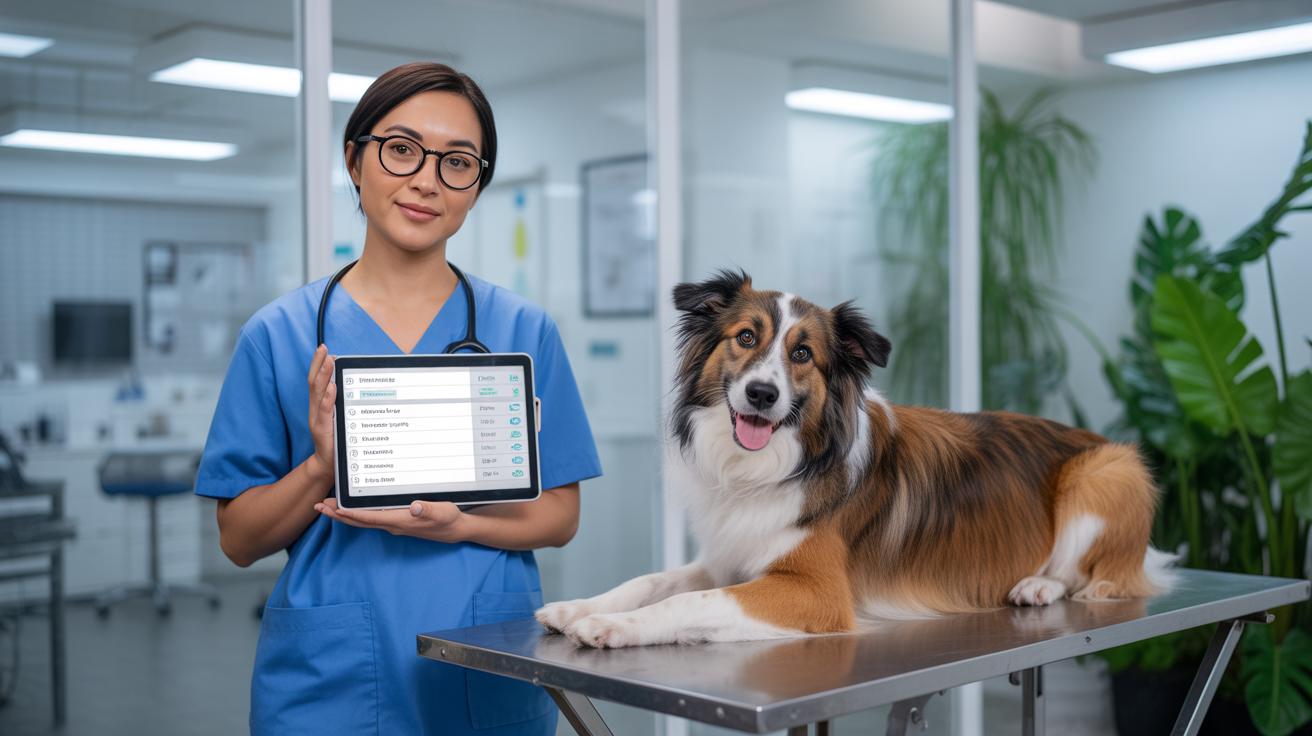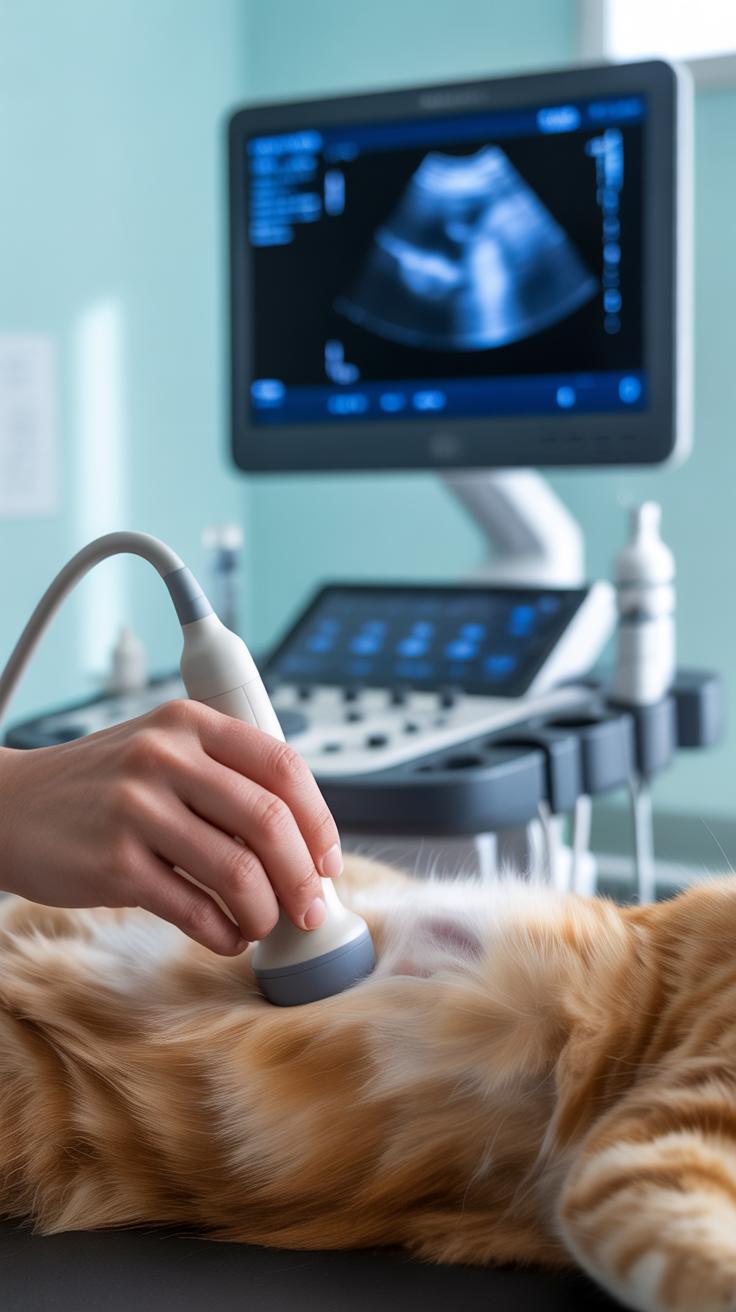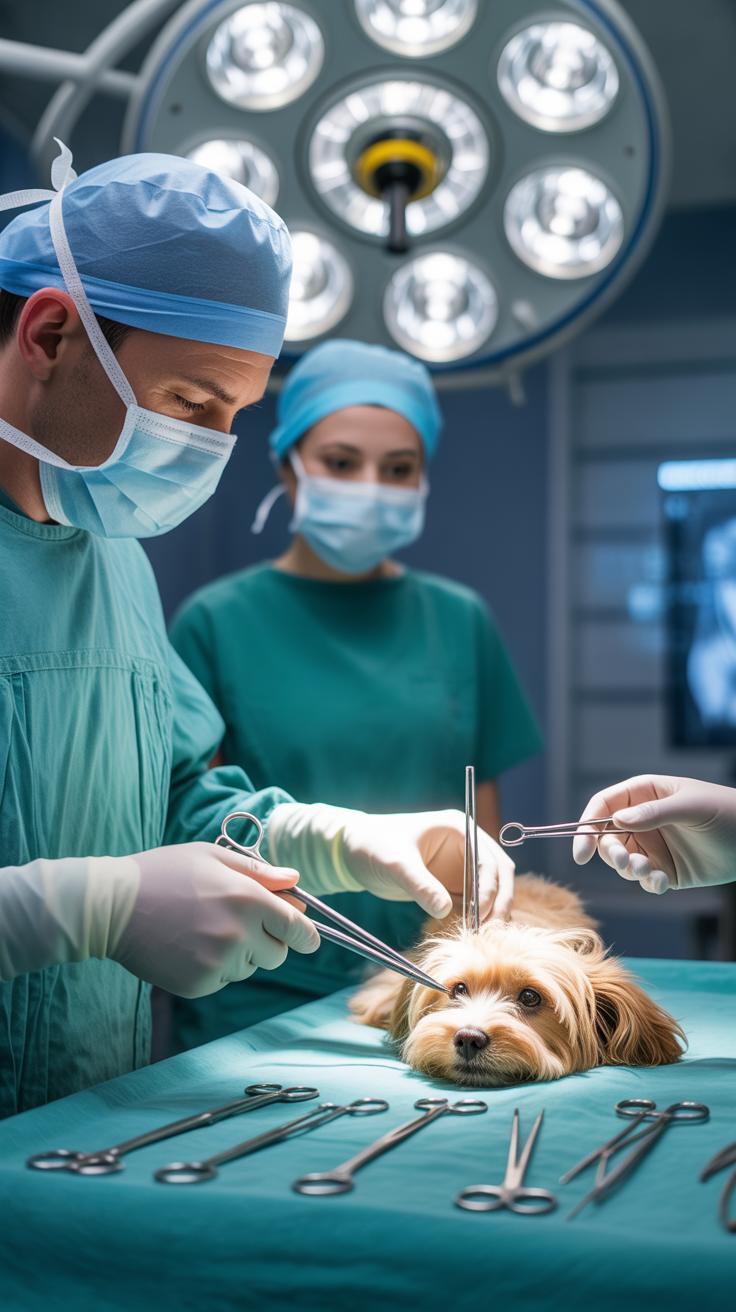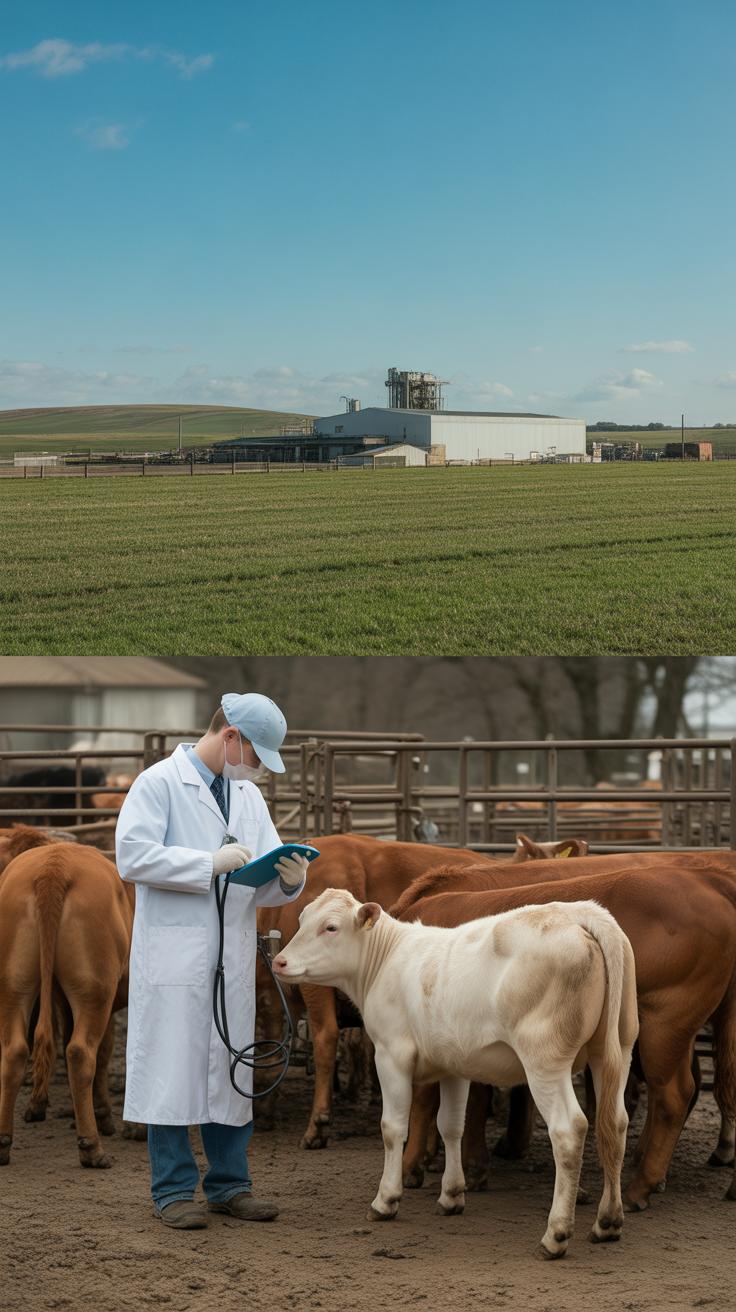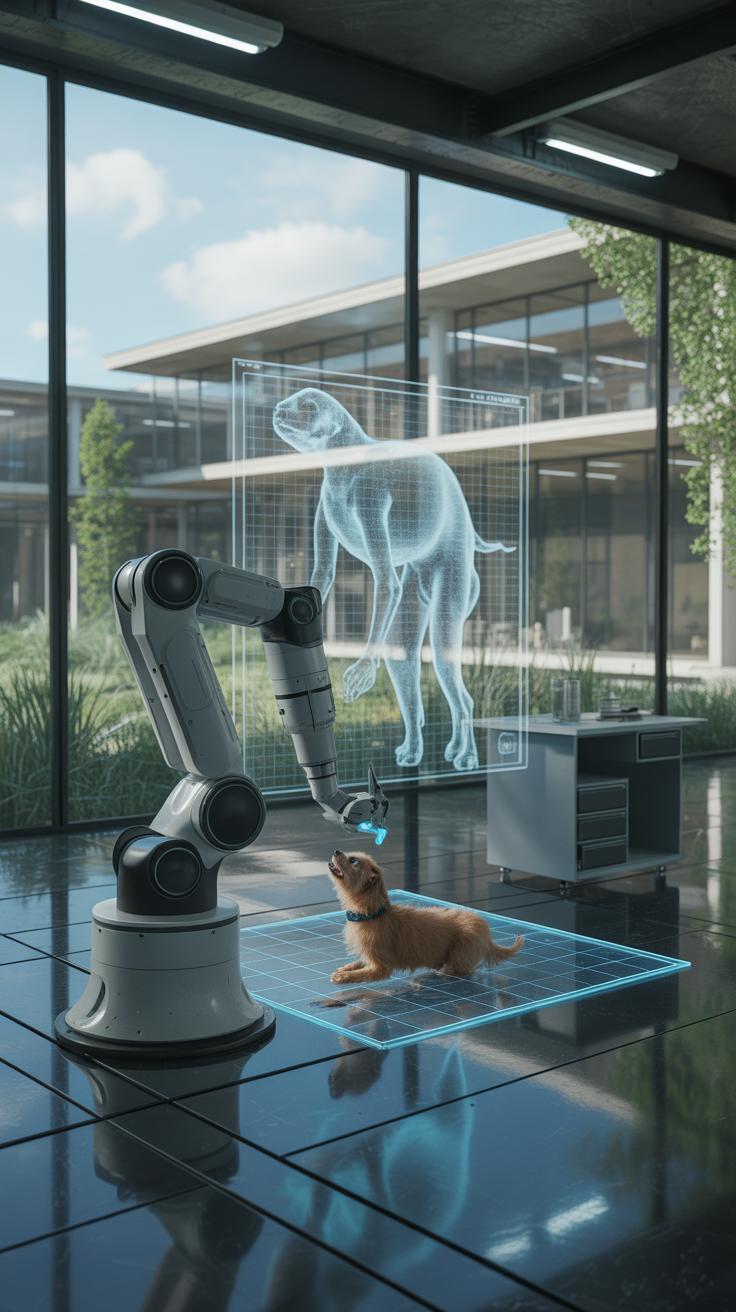Introduction
Veterinary medicine has evolved into a broad and essential field focused on preventing, diagnosing, and treating diseases and injuries in animals. These advances support a holistic approach, caring not just for illness but for overall animal wellbeing. This approach helps pets, livestock, and wild animals stay healthier for longer.
By incorporating new diagnostic tools and treatment methods, veterinary medicine now offers options that consider the whole animal. This article explores these developments and how they contribute to better healthcare by addressing physical, mental, and emotional needs. You’ll find practical insights into how these changes can impact your animals’ lives.
The Foundation of Veterinary Medicine
Early practices and development
Veterinary medicine didn’t spring up overnight. Its roots reach back thousands of years, when humans began noticing the connection between animal health and their own survival. Early societies tried various treatments—herbal remedies, rituals, even simple surgeries—to ease animal suffering and keep livestock productive. For example, ancient Egyptians and Mesopotamians documented treatments for horses and cattle, combining observation with trial and error. These efforts laid a shaky groundwork, more practical than scientific, shaped largely by necessity rather than knowledge.
It wasn’t until the 18th century, with the establishment of formal veterinary schools in Europe, that things started to look more structured. These schools aimed to systematize animal treatment, focusing not just on individual care but on preventing disease outbreaks among populations. You could say this marked the birth of veterinary medicine as a recognized discipline, moving beyond folk remedies and into a more studied practice.
Veterinary medicine today
Today, veterinary medicine is about much more than treating sick pets or farm animals. It stretches across multiple areas: clinical care, disease prevention, public health, food safety, and even wildlife conservation. Vets treat everything from ailing puppies in your neighborhood to monitoring outbreaks of diseases that could jump to humans.
The basic principles? They center on health, welfare, and the interconnectedness of animal and human lives. You might think your vet is just concerned with your dog’s fleas, but their work often impacts broader health concerns, like controlling zoonotic diseases or ensuring the safety of the food chain.
The role of veterinary medicine now includes safeguarding public health and improving animal well-being simultaneously, a balance that’s tricky but essential. So, when thinking about animal care, you’re also indirectly supporting human health, often in ways that aren’t immediately obvious.
Modern Diagnostic Tools in Veterinary Care
Traditional imaging techniques like X-rays and ultrasound have long served as the eyes into an animal’s body, revealing issues that might otherwise go unnoticed. X-rays, for example, help vets spot bone fractures, dental problems, or even swallowed foreign objects. Ultrasound pushes this further by allowing real-time views of soft tissues and organs, such as the heart or kidneys, making it easier to detect abnormalities without invasive procedures.
These tools aren’t just about seeing problems—they also enable earlier detection. Catching a subtle change in organ size or structure can mean the difference between manageable care and a critical emergency. For instance, an ultrasound can identify early signs of heart disease before symptoms become obvious, giving you and your vet a chance to act sooner.
In recent years, genetic and molecular testing have started taking center stage in veterinary medicine. These tests examine an animal’s DNA to uncover inherited conditions or predispositions to certain illnesses. It’s fascinating, really—knowing a breed’s genetic risks helps guide personalized care and sometimes even prevents suffering.
Think about dogs prone to hip dysplasia or cats vulnerable to hypertrophic cardiomyopathy. Genetic tests can reveal these risks before symptoms appear, influencing everything from diet choices to lifestyle adjustments. But it’s not just about prevention. When your vet understands the molecular makeup of a condition, treatment plans can be more targeted, improving outcomes in ways that feel… almost tailored, if you will.
Still, genetic testing isn’t a crystal ball. It offers possibilities, not certainties. Just because a gene is present doesn’t guarantee disease, and not all conditions have clear genetic markers yet. It makes me wonder: how much should we lean on these tests, and when do we hold back, focusing instead on more traditional observation and care? The balance is delicate but undeniably expanding the toolkit vets have to support your animal’s health.
Advances in Veterinary Surgery
Surgical techniques in veterinary medicine have taken impressive strides, making procedures safer and recovery smoother for animals. Surgeons now have access to refined instruments and better anesthesia, cutting down complications. These improvements aren’t just about fancy tools—they often translate to fewer infections and reduced pain for the animals.
Minimally Invasive Surgery
Minimally invasive surgery involves making small incisions and using specialized cameras and instruments to perform operations. You might think this sounds technical, but the idea is simple: less cutting means less trauma to the animal’s body. This typically speeds up healing, reduces scarring, and lowers the risk of postoperative issues.
For example, laparoscopic procedures have become more common in spays and tumor removals. I’ve seen patients bounce back noticeably faster compared to traditional open surgeries. Though it may not be the answer for every case, many vets now prefer it for compatible conditions because of these benefits.
Technology in the Operating Room
Robotic-assisted surgery is beginning to carve a place in veterinary practices, especially in specialty clinics. These systems offer greater precision and control, which can be crucial when operating on small or delicate structures in pets like cats or birds. It’s fascinating, yet the costs and learning curve mean it’s not widespread just yet.
Alongside robotics, advanced monitoring devices help vets track vital signs continuously during surgery. Real-time data on heart rate, oxygen levels, and blood pressure let surgeons make quicker decisions, potentially avoiding complications before they arise. You might wonder if all these gadgets make surgery impersonal, but actually, they help vets stay more attentive.
Holistic Approaches Enhancing Animal Health
You might have noticed that many vets now recommend more than just medications or surgery. They often suggest therapies like acupuncture or massage, which aim to treat the whole animal, not just symptoms. Acupuncture, for example, has roots in traditional medicine and involves placing fine needles at specific points to encourage natural healing. It’s used alongside conventional treatments, sometimes easing chronic pain or improving mobility when other options seem limited.
Massage therapy is another tool in this broader approach. It helps reduce muscle tension and improve circulation, often calming anxious animals. I’ve seen pets respond well after just a few sessions, seeming more relaxed and willing to move. It makes you wonder if we underestimate how physical comfort influences overall health.
Nutrition plays a less flashy but equally crucial role. Vets tailor diets based on an animal’s unique needs—age, breed, health status—all influence what’s best. Sometimes, a diet change can lessen symptoms or slow disease progression without extra drugs. More often, good nutrition supports recovery and boosts immune response, which feels like a simple but powerful step.
Still, not every pet reacts the same way. What works wonders for one might show little effect on another. It raises the question: can these holistic methods ever truly replace traditional care, or should they always remain complementary?
Vaccines and Preventive Care
Vaccine Development and Schedules
Vaccines remain a cornerstone in protecting animals from infectious diseases. They work by stimulating the immune system to recognize and combat harmful pathogens before illness strikes. You might think of vaccinations as building a defense line—sometimes a fragile one, depending on the virus or bacteria involved.
Following a proper vaccination schedule is key. These schedules aren’t arbitrary; they reflect how the immune system responds over time, especially in young or aging animals. For example, puppies and kittens need several rounds of vaccines spaced out to ensure lasting protection. Skipping or delaying doses can leave gaps where diseases take hold.
Yet, vaccine schedules might change based on lifestyle or regional disease risks. The same vaccine might be less critical for an indoor cat but vital for a farm dog. Some vaccines require annual boosters, while others last for years. Talking with your vet about what suits your animal’s specific risk factors is, I think, the best approach.
Routine Health Screenings
Vaccines aren’t the whole story. Regular check-ups allow vets to catch subtle signs of disease before they become serious. Things like dental disease, early kidney issues, or even behavioral changes might show up during a quick exam or basic blood test.
Many pet owners don’t realize how much a routine screening can reveal beyond obvious symptoms. Detecting problems early often means simpler treatments and better outcomes. For example, a senior dog showing mild weight loss or sluggishness might have a manageable thyroid problem if caught promptly.
Scheduling regular wellness visits also lets you discuss diet, activity, and other aspects influencing your animal’s health. Sometimes these visits raise more questions than answers, but they keep the dialogue open. You’re better prepared, perhaps, to notice things you might have missed otherwise—something that routine care really supports.
Veterinary Medicine in Public Health and Food Safety
Zoonotic Disease Control
Zoonotic diseases are infections that can jump from animals to humans. Think rabies, salmonella, or even more complex ones like certain strains of influenza. Veterinary medicine plays a key role in managing these diseases by identifying outbreaks early and stepping in before they spread widely. Vets often act as the first line of defense by monitoring animal populations for signs of illness that might eventually affect humans.
Here’s something to consider: controlling zoonoses isn’t just about treating sick animals. It involves surveillance, education, and sometimes tough decisions about culling or quarantine. You might wonder how often vets deal with this quietly in rural or urban areas you wouldn’t immediately associate with disease control. Their work is often behind the scenes but critical in preventing public health crises.
Safeguarding the Food Supply
Diseases in livestock don’t only threaten animal health but also the safety of the food we consume. Veterinarians keep a close eye on herds to catch illnesses that could contaminate meat, milk, or eggs. This monitoring includes routine health checks and sometimes more invasive testing when there’s suspicion of infection. Each vet’s decision affects millions of meals, which is a bit daunting if you think about it.
To reduce risks, vets work with farmers to maintain good hygiene and animal welfare, which surprisingly, often goes hand in hand with safer food production. You might not have realized how much goes into preventing contamination before food even reaches your plate. It’s not only a matter of economics but public trust as well.
Mental and Emotional Care for Pets
Veterinary care doesn’t stop at physical health; mental wellbeing plays a significant role too. Recognizing stress or anxiety in pets isn’t always straightforward. Vets often rely on subtle signs—changes in appetite, unusual aggression, withdrawal from interaction, or repetitive behaviors can all hint at underlying issues. Sometimes, a pet’s behavior shifts so gradually that owners barely notice until it becomes obvious in a clinical setting.
Identifying behavioral problems involves a careful look at the pet’s environment and routine. Vets usually ask detailed questions about daily life, interaction levels, and any recent changes. That’s critical, because mental health can often be tied to situational stress—like moving homes or losing a companion. Pinpointing these factors can feel a bit like detective work.
Treatment for mental wellbeing includes more than just medication. Often, vets recommend environmental enrichment, like introducing toys or puzzles that engage pets mentally. Training techniques focused on positive reinforcement help reduce fear or anxiety, too. Some clinics have started incorporating pheromone therapy or even acupuncture to calm pets. It’s fascinating how combining these methods improves behavior more than medication alone in several cases.
What strikes me is how personalized these interventions become. No two pets respond the same way. A dog anxious about storms might benefit from a thunder shirt and calming supplements, while a cat stressed by new visitors might need quiet hiding spaces. It makes you wonder—how much are we still missing in truly understanding what our pets feel?
Lifespan and Geriatric Care Improvements
Aging animals’ health challenges
Older animals face a set of health problems that often sneak up on owners. Joint stiffness and arthritis commonly slow them down. Dental disease, too, becomes more frequent—sometimes affecting appetite and behavior.
Pets and livestock may develop chronic kidney issues or heart conditions as they age. Cognitive decline in dogs and cats is another puzzling issue. It can be hard to tell if a restless or confused pet is just tired or showing signs of something deeper.
Some problems seem obvious, others less so, like subtle changes in weight or digestion. I’ve noticed that these shifts often occur quietly over months before they are addressed.
Care strategies for senior animals
Veterinary medicine provides specific treatments and lifestyle adjustments to help aging animals stay comfortable and active.
- Nutritional plans tailored to reduced metabolism and organ function can improve energy levels.
- Physical therapy and controlled exercise help maintain joint mobility.
- Medications to manage pain and inflammation offer relief but require careful monitoring.
- Regular screenings catch diseases earlier—sometimes long before symptoms appear.
Sometimes, simple environmental changes, like softer bedding or ramps, make a surprising difference. It makes me wonder if we overlook basic comfort in favor of high-tech solutions.
There’s no one-size-fits-all approach, and vets often combine several strategies based on each animal’s unique situation. It’s a bit of trial and error at times, but helping your older companion live well feels worth the effort.
Veterinary Education and Ethical Care
Training future veterinarians
Becoming a veterinarian requires years of focused study and hands-on experience. Most vets complete a rigorous program that spans about six to eight years, starting with a solid foundation in biological sciences. Then, the training moves into specialized veterinary courses coupled with clinical rotations. These rotations expose students to various species and practice settings, from small animal clinics to large animal farms.
Recently, there’s been a shift toward incorporating more holistic and integrative approaches into the curriculum. Future vets are encouraged to understand not just disease but the broader context of an animal’s environment and lifestyle. For example, some schools now emphasize communication skills and ethical decision-making, preparing students for those tough conversations about quality of life or euthanasia.
It makes you wonder—do the current training programs balance technical skills with empathy well enough? Some vets feel education still leans too much on the clinical side, leaving compassionate care as a secondary focus. But there is a growing awareness that caring for animals involves more than just treatments; it’s about understanding each patient’s unique story.
Ensuring animal welfare
Ethical care sits at the heart of veterinary work. Veterinarians pledge to prioritize animal welfare, ensuring that every decision respects the animal’s dignity and well-being. This commitment isn’t always straightforward—vets often face conflicting interests between owners, animals, and society.
Core principles include reducing suffering, preventing disease, and promoting health, but how these translate into practice can be complex. Think about a situation where an animal’s best interest might mean difficult choices, like euthanasia or refusing costly treatments that won’t improve quality of life. Vets must weigh compassion alongside practicality.
Many profession-wide codes emphasize the need for vets to act with integrity and honesty, caring not just for physical health but also emotional states. This is where veterinary care goes beyond medicine; it becomes a kind of advocacy. And sometimes, advocating means questioning a client’s intentions or pushing back against unnecessary procedures.
So, while technical training builds knowledge, it’s ethical education that shapes the heart of veterinary practice. Could the profession benefit from even more focus on these dilemmas during training? Probably. After all, ethical care doesn’t have simple answers—but it’s essential if vets are to truly serve their patients.
The Future of Veterinary Medicine
The future of veterinary care is starting to look quite different from what many of us imagine. Technologies like artificial intelligence are slowly making their way into clinics, helping vets analyze complex data faster than ever before. For example, AI can assist in interpreting diagnostic images or predicting disease risks based on genetic and environmental factors. It’s not about replacing the vet but supporting the decision-making process.
Telemedicine is another shift reshaping how we access veterinary services. It allows you to consult with your vet remotely, which can be especially helpful in emergencies or for animals that get stressed during travel. I’ve noticed more pet owners appreciate this option, though some still prefer the hands-on exam the old-fashioned way.
Personalized treatments seem promising too. Tailoring care based on a pet’s unique DNA and lifestyle could improve outcomes. Still, we’re not at a point where it’s routine, and the costs might keep it out of reach for many, at least for now.
Alongside technology, the idea of combining traditional medicine with holistic practices is gaining ground. More vets and owners are curious about treating the whole animal rather than just symptoms. It’s a bit tricky, though—finding the right balance between conventional therapies and alternative options isn’t always clear-cut, and sometimes opinions clash even within the veterinary community.
- AI helps interpret complex diagnostic data quickly.
- Telemedicine offers remote consultations, easing access.
- Personalized care based on genetics is emerging but still limited.
- The rise of integrative approaches blurs the lines between conventional and holistic care.
So, what do you think? Are you ready to embrace these changes in your pet’s care? Or do you prefer sticking with what’s proved reliable for years? The path ahead isn’t crystal clear, but it’s shaping up to be more diverse and tailored to individual animals’ needs. It’s a kind of future where technology meets tradition—sometimes smoothly, sometimes with a bit of friction.
Conclusions
Today, veterinary medicine goes beyond fixing problems; it aims to support animals’ full health picture. The advances reviewed reveal ways to improve care with better tools and broader understanding. These changes help animals live stronger, happier lives.
By learning about these innovations, you can make informed choices for the animals in your care. Embracing holistic care in veterinary medicine offers real benefits for animals and creates a more compassionate approach to animal health overall.

